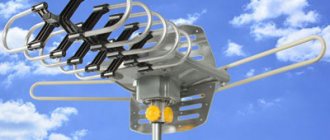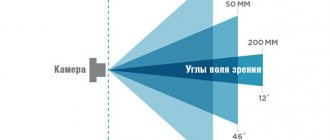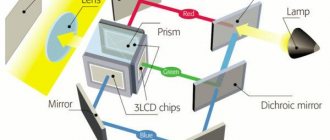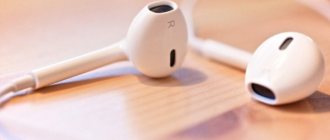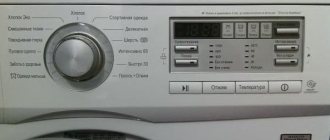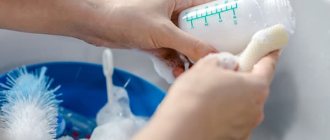No matter how carefully we treat our technology, sooner or later no one can avoid getting dirty on the TV screen. This could be fingerprints, dust or other contaminants. Some people do not adhere to the rules of care for digital equipment, which in turn can lead to irreversible visual consequences. For example, to loss of color saturation. Today we will talk in detail about how to wipe the TV, find out the most popular cleaning methods, and also figure out what means are strictly prohibited from wiping the TV screen.
It should be remembered that improper care of the TV will eventually lead to the appearance of scratches, glare and all kinds of stains on its screen, which will contribute to uncomfortable viewing. Not taking care of the TV screen at all is also wrong; dirt on the screen in the form of dust accumulates static electricity and, among other things, also affects the image quality.
If you are deciding on the choice of a TV or have already become its owner, then you should get acquainted with how to care for it.
How and with what to clean the screen of an LCD TV, computer, laptop at home?
Question: How and with what to wipe the LCD TV screen at home?
Unfortunately, no matter how carefully you treat your equipment, it still gradually becomes covered with all kinds of dirt, fingerprints and dust. The same applies to liquid crystal LCD screens.
Today, many simply do not adhere to simple rules for caring for modern equipment. This leads to irreversible visual consequences. For example, to a significant loss of color saturation of the picture.
In this article we want to tell you how to wipe the LCD TV screen at home. You will learn the most popular home and specialty cleaning methods, as well as understand prohibited methods for cleaning such devices.
Improper care of your TV will inevitably lead to glare, scratches, and dirt stains over time. This will make the viewing experience much worse. Even worse is to not take care of the display device at all, since dirt in the form of dust accumulates static electricity on it and also negatively affects the overall quality of the displayed picture.
Thus, if you have an LCD TV, be sure to familiarize yourself with the proper care of it.
Features of LCD monitors
LCD or LED displays have panels and cells that contain special liquid substances that have optical properties. Their molecules, under the influence of electromagnetic radiation, change orientation, affecting the polarization of the light beam.
Liquid seals are located between two glass panels. On the inside of the TV there are lamps that emit light and color filters. When the device is turned on, the matrix receives a signal from the reader (decoder) and distributes the position of the light, crystals, and color filters. As a result, a person sees a clear picture with high brightness and contrast.
The main characteristics of the LCD screen include:
- Monitor format. The old aspect ratio is 4 to 3. Modern versions work in the HD 16:9 standard.
- Resolution affects the clarity and detail of the image. It is optimal to choose models with Full HD.
- Diagonal. The optimal figure is 20-22 inches.
- Contrast and brightness affect the final color rendering.
- Response time is the minimum amount of time required for a pixel to change brightness. In simple words, the speed of image display.
It is also necessary to take into account the type of matrix, the number and types of connectors, and the presence of additional functions.
All TVs with LCD matrices are very sensitive to moisture, dust and temperature changes. Therefore, care requires careful, careful handling of the display.
Causes of contamination and cleaning frequency
Almost all of us today quite often look at the LCD screens of a variety of digital devices. From mobile phones and tablets, to TVs and personal computers. Both the perception of information and human vision depend on the quality of image transmission on these devices.
What makes display devices so dirty that they need to be cleaned regularly? There are several main reasons:
- Dust, which is very attracted to televisions due to the so-called static electricity.
- Stains after improper cleaning.
- Traces from various insects.
- Fingerprints, especially when they are stained with something.
If dust has accumulated on the TV, or dirt spots have appeared that significantly spoil the overall picture, it is time to do a full screen cleaning.
It is important to understand that traces, alas, are not always quite obvious, and sometimes a little dirt can significantly worsen the picture.
To more correctly assess the quality of the LCD screen, you need to look at it from the side or completely turned off.
Rules of care
The main principle of cleanliness of household appliances and electronics is regular cleaning.
Removing small dirt and dust is much easier than dealing with complex, dried stains.
The sequence and main rules for cleaning the TV are as follows:
- Turn off the device using the button on the dashboard or remote control. Do not pull out the plug from the socket while the TV is running.
- Disconnect the device from the power supply, completely de-energizing it.
- Apply the selected product to a soft cloth or lint-free wipe. Soak the material well and, if necessary, squeeze it out. The fabric should be evenly saturated with the solution, but so that nothing flows or drips.
- Check the surface of the matrix for the absence of abrasive contaminants on it. For example, soil or sand from a flower pot can get here. When cleaned, these grains will leave scratches.
- Wipe the screen with light circular movements. Do not press, rub, or scrape dried stains.
- Clean hard-to-reach places with cotton swabs.
- Wipe dry with a clean cloth and leave the TV on for 20 minutes to dry completely.
- Treat with anti-scratch or antistatic agent.
Periodicity
Standard cleaning periods:
- removing dust using a dry microfiber cloth – once every 2-3 days;
- getting rid of stains, fingerprints and other serious contaminants using industrial or household cleaning products - no more than once a week. The optimal frequency is once a month;
- treating LCD screens with antistatic agents - once every two weeks, after cleaning;
- getting rid of scratches - as needed, after thorough cleaning.
A clean TV screen is the key to high-quality images and comfortable viewing. To care for this equipment, the use of conventional methods is not allowed; the matrix of the device requires a delicate and careful attitude.
How often should you clean your LCD TV screen?
For many, the question of how often to clean the LCD screen remains a mystery. Today there are two extremes. Some begin full-scale cleaning when even a small spot appears. Others wipe the device only when the image is almost invisible behind a dense layer of dust and dirt.
Both the first and second methods are the wrong ways to solve the problem. After all, very frequent cleaning of the display will certainly negatively affect its protective qualities, and dirt stains left for a long time will require more aggressive compounds to be completely removed.
The most correct and optimal solution is a combination of two types of cleansing:
- Carefully and promptly remove all stains and dirty marks.
- Clean the display once every seven days as a preventative measure.
Proper cleaning of the TV screen
To properly clean your screen at home, simply follow the recommendations below:
- Turn off the device in advance to avoid problems such as short circuits. The TV should cool down well.
- Wet wipes are best for cleaning matte screens, while completely dry methods are best for glossy screens.
- Please remove all your jewelry to avoid possible damage to the display device.
- Do not allow moisture to get under the body of the device, and apply the cleaning agent exclusively to the rag itself.
- There should not be too much moisture on the cleaning material. You need to wring it out thoroughly and only then wipe the display.
- For cleaning, it is better to use high-quality lint-free material.
- To avoid any streaks, work from one end of the display to the other.
- Use a toothpick to reach various recesses and corners.
- If the mud stain has already dried, just carefully moisten it with a fairly damp cloth, soak it well and wipe it off.
Frequent TV breakdowns:
What to do if there is no picture on the LG TV but there is sound?
How to remove dead pixels from a monitor or TV at home?
Selecting a cloth for wiping dirt on the LCD screen
To get rid of dirt on the LCD screen, you will definitely need a high-quality napkin.
This product can be made from the following types of fabric:
- Microfiber.
- Disposable wipes.
- Cotton fabric.
At the same time, the main thing in choosing a napkin is the complete absence of lint on it.
Many people believe that you can wipe the surface of a liquid crystal display with a variety of wet wipes. However, it is not. Using a regular wet wipe may very well result in a short circuit. Therefore, it is extremely important that the cloth used for wiping is completely dry.
The second important point when choosing a material for cleaning the display is that this fabric should not become electrified and accumulate so-called static energy. It is best, of course, to purchase special napkins just for such purposes.
How to remove scratches from a TV screen
Along with the important question of how and with what to wipe the LCD TV screen, people often want to know how and with what to remove various scratches on it.
This is due to the fact that where there are small children, as a rule, all sorts of small defects appear - marks on the screens that are very difficult to eliminate by conventional means, and often completely impossible.
A variety of methods are used, but as a rule, they are of little use. But there is no need to be upset. You don't need to think about purchasing a new TV because today there is still a very effective and reliable method for removing scratches.
It’s just that few people know about him today.
So, to remove scratches from a display device, you will need:
- Clean the entire surface using a lint-free or specially damp cloth. The surface must be dry.
- Carefully rub the scratches along the direction of the scratch with a new eraser.
- Wipe off any eraser residue with a dry cloth, and then wipe the screen again.
It should be noted that this method will only help in getting rid of small and not deep scratches.
However, these are the types of shortcomings that can usually be found on screens.
What is better to use
| Screen type | Means |
| LED | Special sets, lint-free wipes treated with foam. |
| LCD | Any non-aggressive means without abrasive particles. |
| Plasma | Soap solution, wipes for glasses. Blow off dust with a vacuum cleaner. |
| LCD | Dry cloth. Volatile substances must not be used. |
All products that are suitable for cleaning TV screens can be used to clean smartphones, tablets, and laptops.
Specialized products from the store
Among the most popular products from the store are the following:
- Special products without abrasives and alcohol.
- TV care kits. They include a bottle of cleaning agent, a high-quality microfiber cloth, a special antistatic brush, official instructions, and in some cases, auxiliary attachments.
- Wet wipes that are impregnated with special compounds. This product is perfect for cleaning LCD displays, because it does not contain abrasives or alcohol, eliminates static electricity and is perfect for any display. To avoid streaks, this napkin can be used twice. Wipe the device with a damp cloth and then with a slightly dry one.
- A set of dry and wet wipes. This is a fairly effective method with an antistatic effect. A damp cloth can be used to remove various dirt stains. Dry will absorb remaining moisture and prevent streaks from appearing on the surface.
- Dry lint-free wipes. They are typically used to remove dust. To clean the surface from dirt, you will need to apply special cleaning agents to them.
- Microfiber cloths. They easily remove dust, grease stains and various stains, and also absorb moisture without problems, without leaving behind scratches and stains. To enhance the effectiveness of the wipe on tough stains, you will need to soak it in a cleaning solution.
- Gels, aerosols and foams. Thanks to their composition, such products remove stains and various dirt without any problems. They should only be used after applying them to a soft cloth, lint-free cloth, or microfiber cloth.
Using Home Remedies to Clean LCD TV Screen
Among the most famous and effective home remedies are the following.
Table vinegar
For home cleaning, the usual table vinegar is simply irreplaceable. It can also be used for high-quality cleaning of LCD displays.
This product will easily remove grease stains that are difficult to remove with other methods. True, using table vinegar for these purposes is not recommended too often, because you can easily damage the display.
Wiping is done like this:
- Mix 3% vinegar (two parts water to one part 9% strength product) and clean water in equal parts.
- Soak the prepared cloth in this solution.
- Wring out the fabric so that it is slightly damp.
- Wipe the screen using gentle circular motions.
- Soak another cloth in water and wring it out well.
- Use this cloth to thoroughly wipe the LCD surface to remove any traces of vinegar.
- Use a dry cloth to wipe the device dry.
Soap solution
Another cleaning method is to use a simple soap solution, which can be easily made from soap and water. After such wiping, it is important to remove the liquid and also wipe the surface until it is completely dry. Otherwise, numerous soap stains may remain on the equipment.
Soap today is easy to find in almost any home, and a solution with it quickly and effectively removes any dirt.
To prepare a soap solution, you can use different methods:
- Mix warm water and a little liquid soap.
- Dissolve solid soap in warm water.
It should be noted that so-called laundry soap cannot be used for such purposes. After all, it contains quite a lot of alkali, which can spoil the matrix of the device. You should also not use soap with dyes and various additives.
The algorithm for using this product is the same as for table vinegar:
- Soak a rag in this solution.
- Wipe the display.
- Use a damp cloth to clean off any traces of soapy water.
- Wipe everything dry.
Isopropyl alcohol
One of the most popular ways to clean your display at home is to use isopropyl alcohol. It is also often used for disinfection.
Despite the fact that alcohol is currently on the list of liquids prohibited for wiping displays, isopropyl alcohol can still be used. Really very neat and careful.
To do this you need:
- Make a mixture of plain water and isopropyl alcohol in a 1:1 ratio.
- Lightly dampen a clean cloth with this solution.
- Gently wipe the TV display with this cloth.
- Wipe the screen again with a clean, damp cloth.
- Remove any remaining moisture with a dry cloth.
If this particular method was chosen to clean the TV display, then it is extremely important to create a competent solution. If for some reason you cannot measure the proportions more accurately, then it is better to prepare a less saturated solution, since if there is too much alcohol in it, it is possible to damage the special anti-reflective coating.
Before cleaning the LCD display, be sure to read the official manual for the TV. After all, substances that are prohibited for use on the selected model of equipment are often prescribed there.
Remote controller
In conclusion, let's look at how to keep the remote control clean.
Quick cleaning
Depending on how often you use the remote, it needs a quick cleaning at least once a week. Before the process, we still recommend temporarily removing the batteries from the device.
Next we proceed as follows:
- Using cotton pads and cotton swabs soaked in either plain water or isopryl alcohol or a special plastic cleaner, wipe the buttons and the front and back of the device body. Be sure to wipe it dry with a soft cloth after such cleaning!
- We carefully remove dirt that has clogged up in the spaces between the halves of the case, between it and the keys, with a toothpick. Be careful not to push debris into the device in this way.
- Use a dry, lint-free cloth to wipe the battery compartment and the inside of the back cover. If you notice dirt there in hard-to-reach places, remove them with dry cotton swabs.
Cotton swabs for cleaning the remote control
Major cleaning
If the remote control is in too bad shape, or if you spilled or spilled something on it, then only complete cleaning will help. So, how to wash the TV remote control:
- Look how the halves of the body are fastened together. If these are screws, then unscrew them with a small screwdriver; if they are latches, then you can help yourself with a non-sharp knife.
- When disassembled, you will see two halves of the case, a panel with buttons and a board.
- Covers and rubber keys are washed in a basin in soapy water. Wipe off stubborn stains with an old toothbrush.
- Clean the board with a lint-free material slightly moistened with alcohol.
- Be sure to dry all parts with a soft cloth before assembly!
You can turn to industrial alcohol for help
Advice! A special case will help keep the remote control clean as long as possible. You can also use “grandmother’s” method - wrap it in thick transparent polyethylene and secure it with tape.
So we’ve figured out how to wash an LCD TV inside and out: body, screen, remote control. We hope that the tips were new and useful for you!
How to clean heavy stains
If the stains are too old or too extensive to be removed by simply wiping the screen, you can use one of the following methods:
- Repeat cleaning several times using any home methods until the desired result is achieved.
- Specialized solutions for cleaning LCD displays.
What not to do
If you are thinking of wiping a dirty TV, then before you start, it is important to understand that there are prohibited actions for such a procedure.
You definitely can’t do them while cleaning. Here they are:
- Wipe a working TV. It is quite possible not to disconnect it from the network, but the LCD screen must certainly be turned off.
- When cleaning, press firmly on the surface of the display and try to scrape off the stain.
- Turn on the LCD display immediately after cleaning.
- Spray cleaner directly onto the display as it may get inside the TV and break it.
To remove dirt from the display, it is prohibited to use the following materials:
- Hygienic wet wipes (stains remain on the surface of the LCD screen).
- Various hard materials. Newspapers, paper towels and napkins (they scratch the display easily).
If we talk about the means that cannot be used to clean the TV, we can note the following:
- A variety of alcohol-containing products that can easily damage the display matrix.
- Ordinary drinking water, which may well contain various impurities and dirt.
- Household chemicals that are very aggressive for use on TV.
- Solvents that will simply ruin the LCD display.
- Various abrasive powders that will easily scratch the LCD display.
Prohibitions
It is important to know what cannot be used to wipe an LED TV. These are aggressive liquids:
- Acetone, gasoline, dyes, solutions, ammonia.
- Alcohol and preparations made on its basis dissolve the thin anti-reflective coating. This speeds up the process of cracking.
- Do not use soda or washing powder to clean the monitor. These components scratch the display.
- Paper napkins and towels contain coarse particles. Their use damages the surface.
- Window, dish, or glass cleaners contain acetone. They cannot be used to clean your screen.
- Wet cosmetic wipes do not cope with the task of cleansing; moreover, their use leads to the appearance of stains.
Prevention of dust and dirt
In order not to have to clean the LCD display from all sorts of dirty spots again almost every day, it is important to adhere to some fairly simple rules.
Among them are the following:
- Do not touch the display with your fingers. This prohibition is due to the fact that even completely clean fingers can leave behind traces of sweat and grease. The latter do not look aesthetically pleasing and constantly accumulate layers of dust.
- It is necessary to clean both the screen itself and the TV body from dust, since dirt from the latter almost instantly transfers to the display device.
- You should not eat near the screen. After all, splashes of liquids or small pieces of food can accidentally fall on it at any time. This will not only contaminate the device’s screen, but may even cause it to malfunction.
- Use special wipes with an antistatic effect as often as possible. This will prevent dust from appearing on the LCD screen.
